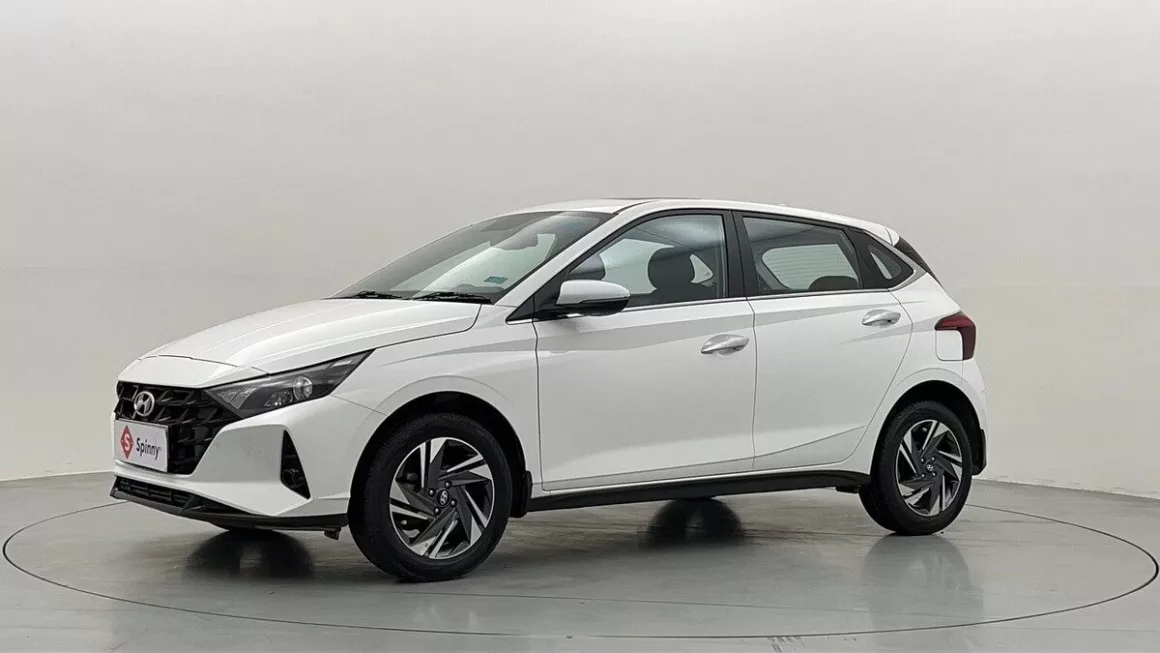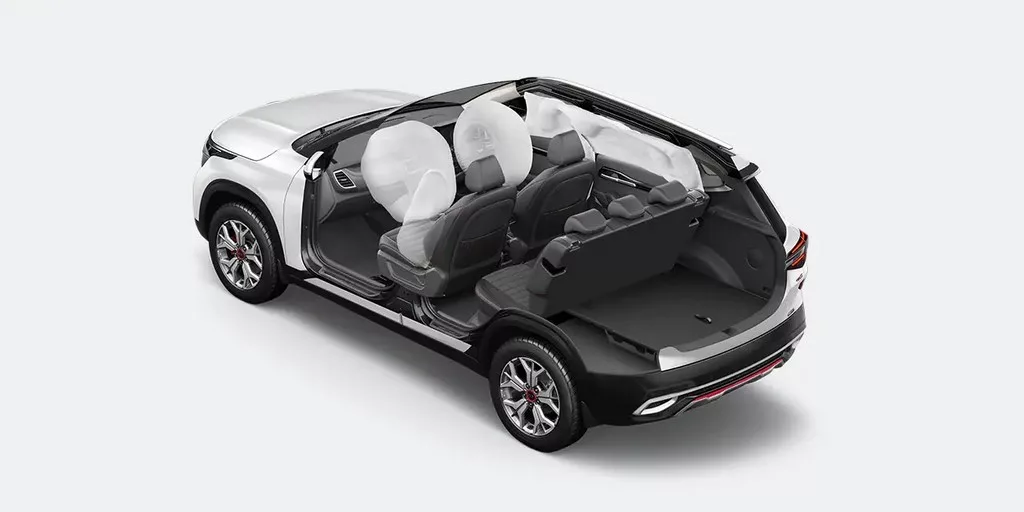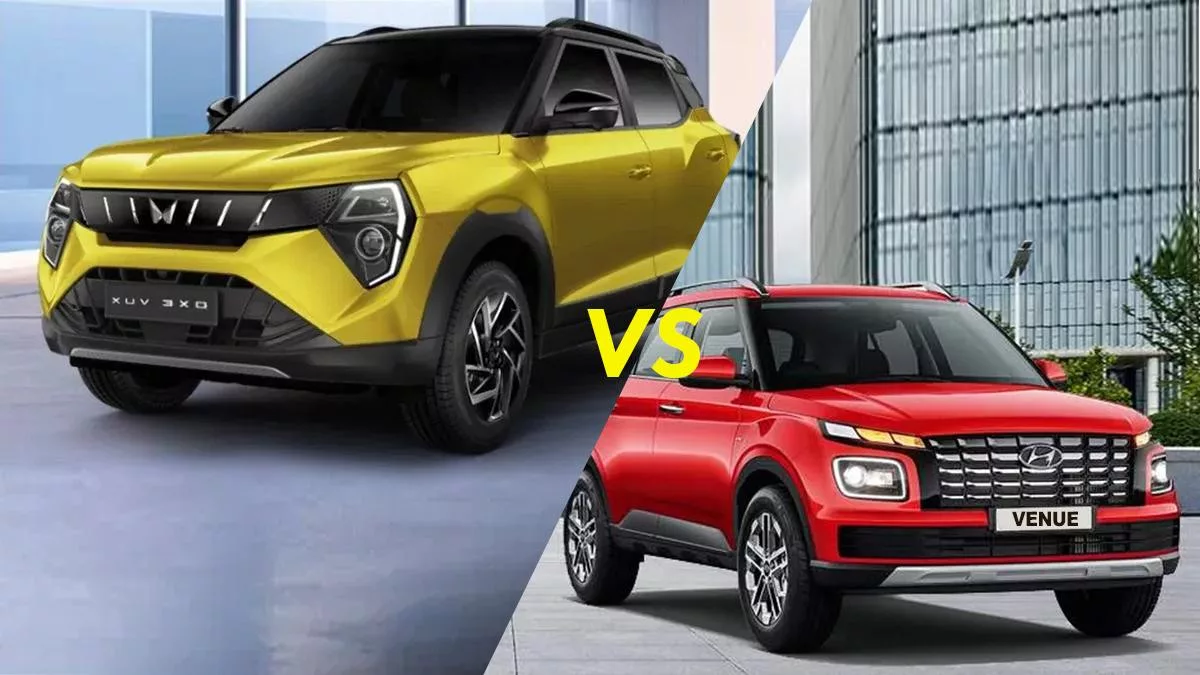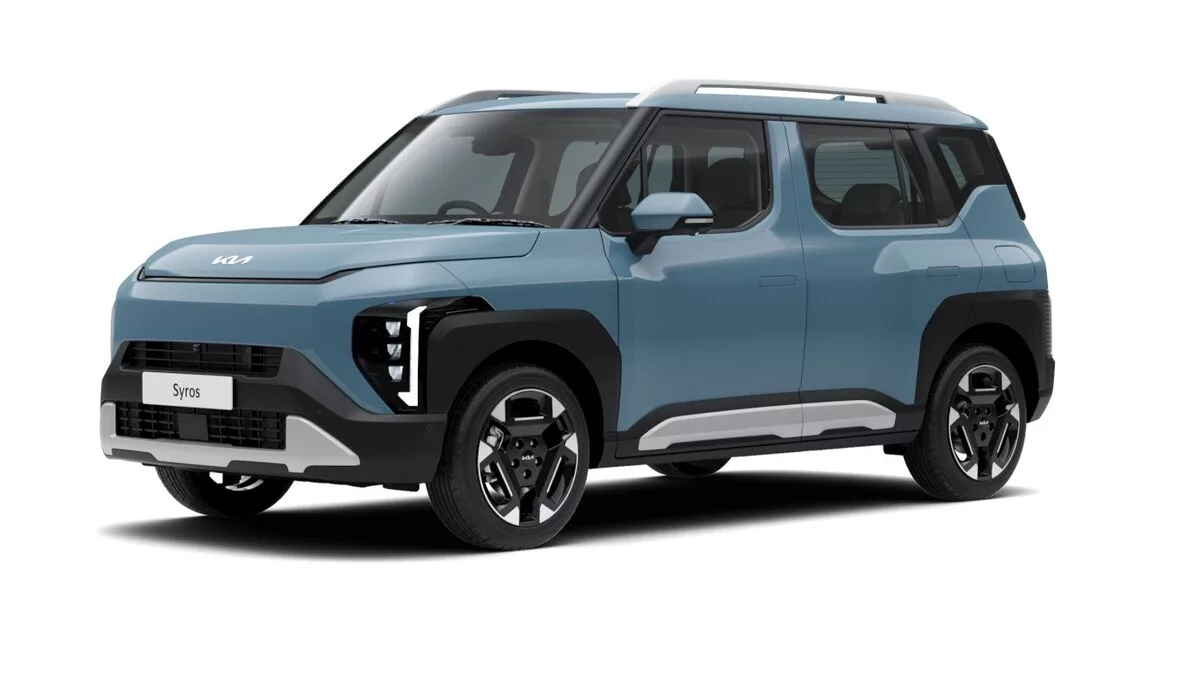The Hyundai i20 has been around since 2008 when it first entered the Indian market. Today, it is a household name in the country. The i20 has undergone many changes over the years, and right now, in its fourth generation, it remains a popular hatchback option. Kia introduced the Sonet compact SUV to rival the likes of Tata Nexon, Mahindra XUV300, Nissan Magnite, and Hyundai’s own Venue.
Kia recently launched a facelift for the 2024 Sonet, and the pricing of the Sonet also makes it an excellent alternative to many people considering premium hatchbacks like the Hyundai i20. People heading the showrooms with a budget of Rs. 7 to 10 Lakh budget are no longer limited to hatchbacks like the i20 as there are plenty of compact SUVs like the 2024 Kia Sonet falling in that price range. Though, you will soon find out that both these cars exist in separate fields.
Let’s find out whether you should stick with the uber-popular hatchback or opt for Kia’s compact SUV.
Kia Sonet vs Hyundai i20: Dimensions
Parameters | Kia Sonet | Hyundai i20 |
Length (mm) | 3995 mm | 3995 mm |
Width (mm) | 1790 mm | 1775 mm |
Height (mm) | 1642 mm | 1505 mm |
Wheelbase (mm) | 2500 mm | 2580 mm |
Boot Space (L) | 392 litres | 311 litres |
Ground clearance (mm) | 205 mm | 170 mm |

Here, you will find a noticeable difference between the two since one is a hatchback and the other a compact SUV. The Sonet is bigger than the i20, but not by much. Since both the Sonet and the i20 share the same platform, they also have the same length and a slight difference in wheelbase. Hence, both cars provide similar legroom and somewhat similar handling due to comparable weight balance.

The Sonet and the i20 start showing some differences in the height and ground clearance aspects. The Sonet is higher than the i20 by 142 mm. The extra height gives you more headroom for the taller folks. Also, the 35mm extra ground clearance can be a boon when travelling over uneven roads in India. The Sonet can also hold 81 litres of extra luggage. There’s a mere 15 mm width difference between the two, with the Sonet being wider. However, it can be useful with three passengers in the second row.
The Kia Sonet bags the win between the two for their dimensions. The purpose of an SUV is to provide more space for the passengers and their luggage than most other types of cars, and the Sonet is no different. While the i20 is not as big as the Sonet, it certainly holds its own when compared to a hatchback like the Maruti Baleno.
Kia Sonet vs Hyundai i20: Engine & Transmission
Parameters | Kia Sonet | Hyundai i20 |
Engine Options | Smartstream G 1.2-litre Petrol Smartstream G 1.0-litre Turbo Petrol 1.5-litre CRDi Diesel | 1.2-litre Kappa Petrol |
Transmission Options | 5-speed Manual 6-speed iMT 7-speed DCT 6-speed AMT | 5-speed Manual CVT Automatic |
Power | 83 - 120 PS | 83 - 88 PS |
Torque (Nm) | 115 - 250 Nm | 114 Nm |
Mileage | 18.2 to 24.1 km/l | 19.7–20.4 km/l |
Hyundai used to offer multiple fuel options for the i20 in its previous generation, but the current one only comes in petrol. The Sonet, on the other hand, still comes with the diesel powertrain that you’ll also find in the Venue.

The i20’s only powertrain is a 1.2-litre Kappa petrol. It is naturally aspirated and comes paired with either a 5-speed manual or a CVT, or what Hyundai calls the iVT (Intelligent Variable Transmission). The corresponding Kia engine would be a 1.2-litre naturally aspirated MPFi engine with similar power figures. This one only comes with a 5-speed stick shift. The second petrol engine option is a 1.0-litre turbocharged 3-cylinder. With a gasoline direct injection system, this one makes 120 PS and 172 NM of torque. Kia pairs this engine with a 6-speed iMT (clutchless manual) or 7-speed DCT transmission option. Finally, the diesel offered with the Sonet is a 1.5-litre naturally aspirated CRDi. The diesel motor comes with the same 5-speed manual and 6-speed iMT as the petrol and a 6-speed AT (Torque Converter).
A car’s mileage is one of its most important figures, one that grabs all the buyers’ attention. The Kia Sonet’s ARAI mileage ranges from 18.2 to 24.1 km/l, depending on the engine and transmission options. The Hyundai i20, on the other hand, claims an ARAI mileage of 19.7 to 20.4 km/l, depending on the transmission chosen. Of course, these figures vary for city or highway driving and also the driver’s way of managing throttle and brakes.
Here, if Petrol is your preferred fuel of choice, then you can check out both of them and opt for either one since there’s not much difference between the two in terms of mileage. The Kia Sonet is the one to go if you want to explore more fuel choices or even the types of automatic transmissions on offer. Certain Sonet engines also generate more power than the i20, so it also wins in the power department.
Kia Sonet vs Hyundai i20: Features and Comfort
Features | Kia Sonet | Hyundai i20 |
Infotainment System | 10.25-inch HD Infotainment System with Android Auto and Apple CarPlay | 10.25-inch Touchscreen Infotainment System with Android Auto and Apple CarPlay |
Music System | 7 speakers | 7 speakers |
Climate Control | Yes | Yes |
Ventilated Seats | Yes (Front) | No |
Adjustable Steering | Tilt | Tilt & Telescopic |
Drive Modes | Yes | No |
Instrument Cluster | Digital | Digital |
Sunroof | Yes | Yes |
Adjustable Seats (Manual or Electric) | Manual | Manual |
Rear AC Vents | Yes | Yes |
60:40 Rear Seat Split | Yes | Yes |
Cruise Control | Yes | Yes |
Hyundai has improved the way its cars look both inside and out, and by extension, so has Kia. Their newer cars have gotten significant upgrades in the cabin layout, and so has their features list.

The Kia Sonet comes equipped with just about every comfort and convenience feature you would expect from a compact SUV in its price range, with a couple of exceptions. The Sonet lacks telescopic steering adjustment and electrically adjustable front seats. Other than that, it comes with everything from an electric sunroof, cruise control, wireless connectivity, and multiple driving modes. The Sonet even comes with ventilated front seats. You cannot say that about most other rivals of this stylish SUV.

The Hyundai i20, being an upgrade over the i10, boasts a generous amount of features as well. Much like the Kia Sonet, it also comes with most of the expected bells and whistles, like a voice-enabled electric sunroof, cruise control, rear AC vents, a digital instrument cluster, and wireless connectivity. Compared to the Sonet, it lacks ventilated seats, but it does have telescopic steering adjustment, which the Sonet misses out on.
The difference between the two cars here is relatively small. Both cars here make use of Hyundai’s modern cabin design and even feature the same infotainment system. You won’t regret missing out on many features but one or two by choosing either one of them.
Kia Sonet vs Hyundai i20: Safety Features
Features | Kia Sonet | Hyundai i20 |
GNCAP Safety Ratings | Not Tested | Not Tested |
Airbags | 6 | 6 |
ABS with EBD | Yes | Yes |
ESC | Yes | Yes |
Traction Control | Yes | Yes |
Automatic Headlamps | Yes | Yes |
Rain-sensing Wipers | No | No |
Hill Hold Assist | Yes | Yes |
Hill Descent Control | No | No |
Rear Sensors | Yes | Yes |
Rear Parking Camera | Yes (360° Camera) | Yes (360° Camera) |
ISOFIX Child Seat Anchor Points | Yes | Yes |
ADAS | Yes | No |
Safety is a crucial factor for many people who are out to purchase a new car. You should know that neither the Kia Sonet nor the Hyundai i20 are exactly known for their safety ratings. You should check out cars like the Tata Altroz, Nexon, and the Mahindra XUV300 if you want a 5-star safety-rated car.

Nevertheless, the Kia Sonet went for the Bharat NCAP crash test, but the score hasn’t been announced yet. The Sonet also has driver-assist features like ADAS, ABS, EBD, automatic headlamps, hill hold assist, stability control, and traction control. However, this one also lacks hill descent control and rain-sensing wipers.

The Hyundai i20 also comes with driver-assisting safety features like ABS, EBD, and ESC. But, much like the Sonet, the i20 also lacks hill descent control. However, it doesn’t stop there with the i20; you also miss out on features like ADAS, traction control and rain-sensing wipers.
The Hyundai i20 matches the bigger Kia Sonet on almost all safety features except one – ADAS. If you want to reap the benefits of advanced driver assist features, choose the Sonet’s top variant. Otherwise, both cars are pretty evenly matched.
Kia Sonet vs Hyundai i20: Prices & Variants
Variants | Kia Sonet | Hyundai i20 |
Base | Rs. 7.99 - Rs. 9.79 Lakh | Rs. 7.04 Lakh |
Mid | Rs. 8.79 - Rs. 11.39 Lakh | Rs. 7.75 Lakh |
Upper-Mid | Rs. 11.49 - Rs. 12.99 Lakh | Rs. 8.38 - Rs. 9.53 Lakh |
Top | Rs. 13.39 - Rs. 15.69 Lakh | Rs. 9.34 - Rs. 11.21 Lakh |
Both brands have split the features nicely between multiple variants which can help people save some money if they are okay missing out on some of the premium features.

The Kia Sonet’s base model starts from Rs. 7.99 lakh, and it comes with a few basic features like a 4.2″ instrument cluster, rear AC vents, charging sockets, and power windows at the front. The top-most model, on the other hand, sells for more than Rs. 13.39 lakh, and it gets everything from ventilated seats, power-adjustable seats, crystal-cut alloy wheels, an electric sunroof, and a lot more. But in most cases, the real value-for-money trim lies in between, and the Sonet is no different. The HTK Plus starting from Rs. 9.90 lakh, and the HTX Plus starting from Rs. 11.49 lakh come out as some of the best trims for their money’s worth. If you don’t mind an electrically adjustable driver’s seat, alloy wheels, ADAS, or a sunroof, the HTK Plus covers most of the basic and some luxury needs of a new car in an affordable package. Moreover, every Kia Sonet comes with a suit of 15 safety features such as 6 airbags, ABS, EBD, TPMS, auto door lock, etc. as standard.

The Hyundai i20’s various trims are named Era, Magna, Sportz, and Asta as the base to top variants, respectively. With an affordable starting ex-showroom price of Rs. 8.38 lakh, the upper-mid Sportz trim brings the most to the table for its price. This variant comes with some essential features such as electrically adjustable and retractable ORVMs, a cooled glove box, a rear defogger, a rear parking camera, a clutchless manual transmission option, and driver seat height adjustability over the already feature-rich mid variant.
Both cars are adequately priced for what they are and what they offer. Though, compared to each other, the i20 gets the W for affordability. For a price similar to a mid-level Kia Sonet, you can get a top-of-the-line i20 variant or save a lot of money if you choose one of the lower variants.
Kia Sonet vs Hyundai i20: Summary
And there you have it, everything you need to know about the comparison between the Kia Sonet and the Hyundai i20.
If you crave a commanding road presence, SUV power, and tech-filled comforts, the Kia Sonet will capture your heart. It is bigger, has more powerful engine options, and comes with plenty of safety tech as standard. Overall, it is a futuristic and feature-rich SUV that’s sporty by nature.
Conversely, the Hyundai i20 pays attention to your pocket without skimping on the flair. It offers tremendous fuel economy and practicality at an affordable price. Although the i20 comes with only one engine option, you can pair it with either of the multiple transmission choices, and the features list only keeps getting better.
Remember, the bottom line is that you’ve got to choose what thrills you: the feature-rich Sonet or the savvy saver i20. Either way, you’re scoring high on value and getting a good dose of driving joy.





